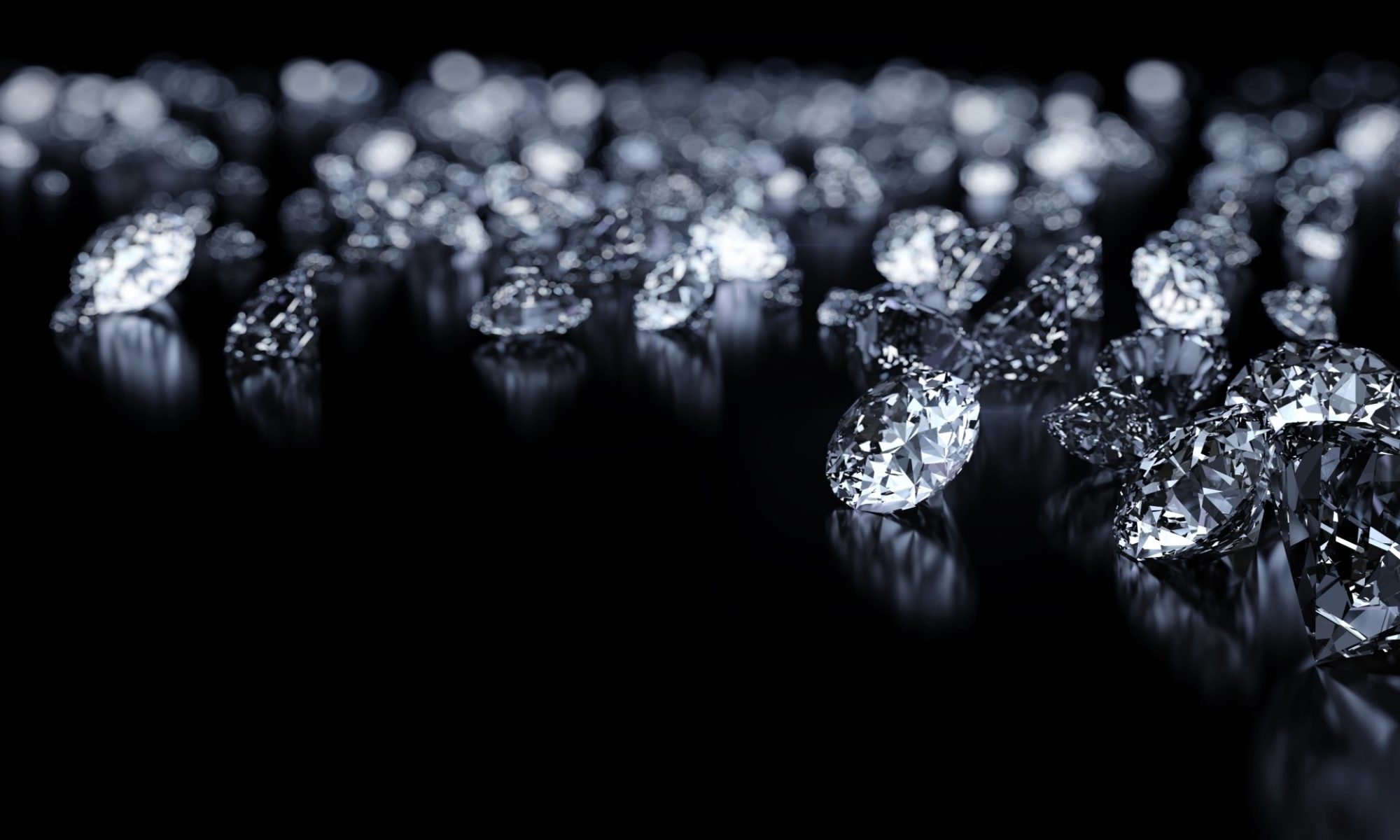
Education
Diamond CutGemstone cutters have always known that the faceting on a gemstone is what gives it ‘life’. Even before there were grading certificates, traders would factor in poor cut proportions into the price of diamonds. It’s now universally accepted that cut is the most important factor out of the 4Cs of diamonds so you better pay attention. This tutorial is designed to get you … [Read more…] Diamond CaratSize is the first thing anyone sees when they look at a diamond. So if you’re looking to maximise wow factor, one of the best ways to do this is to optimize the diamond for size. Not only does a larger diamond draw more attention, but a larger diamond also has bigger facets that give off more sparkles. Also, when you’re describing the diamond to anyone, the first thing usually … [Read more…] Diamond ColorDiamond color is graded on a scale from D-Z with D-color being the most colorless and Z-color being the most yellow. This is further subdivided into smaller ranges. For example, DEF is referred to as the colourless range and GHIJ is referred to as the near-colorless range. The difference between each color grade is very, very slight. Although there are people who will be … [Read more…] Diamond ClarityClarity refers to the flaws in a diamond and is graded from Flawless (FL) to Included 3 (I3) by the GIA. The scale covers the following grades: • Flawless (FL) • Internally Flawless (IF) • Very Very Slightly Included 1 (VVS1) • Very Very Slightly Included 2 (VVS2) • Very Slightly Included 1 (VS1) • Very Slightly Included 2 (VS2) • Slightly Included 1 (SI1) • Slightly … [Read more…] FluorescenceFluorescence is the glow that can be seen when the diamond is viewed under a black (UV) light and is caused by boron impurities that occur due to defects in the diamond’s crystal structure. Most type-1a diamonds that fluoresce do so with a bluish glow, although it is possible that a diamond fluoresces with a different color such as yellow or white. One important thing I … [Read more…] |
How to Pick a Diamond(This tutorial only applies to round brilliant diamonds. If you’re looking for a princess cut diamond, please read my tutorial on princess cuts here.) You’ve read all the basics and you’re now ready to start looking for a diamond. What you’ll find once you start looking is that if you just input the 4Cs into a diamond search, you’ll end up with many choices that all look … [Read more…] Hearts and ArrowsHearts and arrows (H&A) diamonds have become popular in large part due to the romance associated with it, and it is impossible to deny the connection that is immediately made with the symbol of the diamond ring and a wedding engagement. It’s no wonder the term has been heavily marketed. The diamond industry even refers to it as the “Cupid Effect”. But while many people … [Read more…] Diamond Light PerformanceLight performance refers to how a diamond handles light. A diamond can either return or leak light. I’m going to try to explain this by using the following diagram. Let’s follow a ray of light (in blue) as it enters a diamond with ideal proportions through the crown. First it is slowed down and bent. Inside the diamond, the ray of light is totally reflected off two … [Read more…] Idealscope and ASETThe idealscope and the Angular Spectrum Evaluation Tool (ASET) viewer are the two most important tools that you need in order to assess light performance. This tutorial is designed to help you understand what these tools are used for, how to use them properly, and how to interpret their results. It’s important that you understand that the handheld versions of the idealscope … [Read more…] Character of DiamondThe character of diamond can be broken down to brilliance, fire, and sparkle scintillation. The character of diamond is so important that I’ve coined it the 6th C of diamonds, after carat, color, clarity, cut, and cost. Brilliance Brilliance is brightness and contrast. I’m going to try to explain this with a short story from my very first diamond consult. When I first … [Read more…] Holloway Cut Advisor (HCA)The Holloway Cut Advisor (HCA) is a piece of software that was developed by Gary Holloway to help you determine the potential light performance of a diamond. The HCA is easy to use. You just simply plug in the information in a diamond lab report and it outputs a score. You can access the HCA tool here. This is what you get from an HCA result: If you were ever … [Read more…] |
Diamond Grading CertificatesIt’s important to get a diamond with a certificate. That’s about all the advice that many sites give you. Lab reports are important but this tutorial is designed to show you that you simply cannot rely on a lab report for evaluating the cut of a diamond. I know that by this stage, you are more than likely to be aware of at least some of the different labs that grade … [Read more…] Diamond Symmetry and PolishI would like to credit the GIA because most have learned a lot from these two research articles that you can find here and here. In 2012, the GIA updated their rules on grading the following 10 different symmetry parameters: Out-of-round Table off-center Culet off-center Table/culet alignment Table size variation Girdle thickness variation Crown height … [Read more…] Cut GradeFor over 100 years, the diamond industry has known about a set of proportions that created the best looking round brilliant diamond. However, despite GIA having published cut classifications in 1953, it wasn’t until 2006 that they began to issue a cut grade on their diamond grading certificates. In fact, AGS Laboratories was the first lab in the world to start issuing cut … [Read more…] Pavilion Depth and TableThe table facet of a diamond works together with the pavilion facets to drive the light performance of a diamond. The table facet is the largest ‘window’ into the diamond allowing light in and the pavilion facets act as ‘mirrors’ to return that light to the observer. The relationship between the two facets also has a huge impact on the appearance of the diamond. Large Table … [Read more…] Crown and Pavilion AnglesThe crown facet serves multiple purposes. First, it supports the pavilion facet to drive light return, ultimately determining the brightness of the diamond. The crown facet also acts as a prism to disperse light giving off fire. The size and the angle of the crown facet determine the amount of fire a diamond gives off. The crown’s third purpose is to bend light so that what … [Read more…] Lower GirdlesThis will be the first of three tutorials on the minor facets, which consist of the lower girdles, the upper girdles, and the star facets. The focus of this tutorial is on the lower girdle facets and how they work together with the star facets to affect the appearance of a diamond. … [Read more…] Star FacetIn the previous tutorial on the lower girdle, we showed you how the length of the star facets help us make an educated guess about the length of the lower girdle. However, the star facets can also help us make an educated guess about size the table facet as well. For a diamond with 50% stars and 60% table, the table edge will line up with the edge of the star facet forming a … [Read more…] Upper GirdleThe upper girdle facets surround the edges of the diamond. It was mentioned in the last tutorial that the star length affects the upper girdle angles, but this is only half the story. This tutorial will introduce to you the effects of upper girdle indexing, commonly referred to as painting and digging… [Read more…] Girdle and CuletThe girdle and the culet are not as important to light performance as the other facets, but an understanding how these facets work is essential in diamond selection. The Girdle In “picking a diamond” tutorial, its recommended to get a thin-to-medium girdle. To understand why this is the preferred range, you first need to understand the purpose of the girdle. The reason a diamond has a … [Read more…] |
